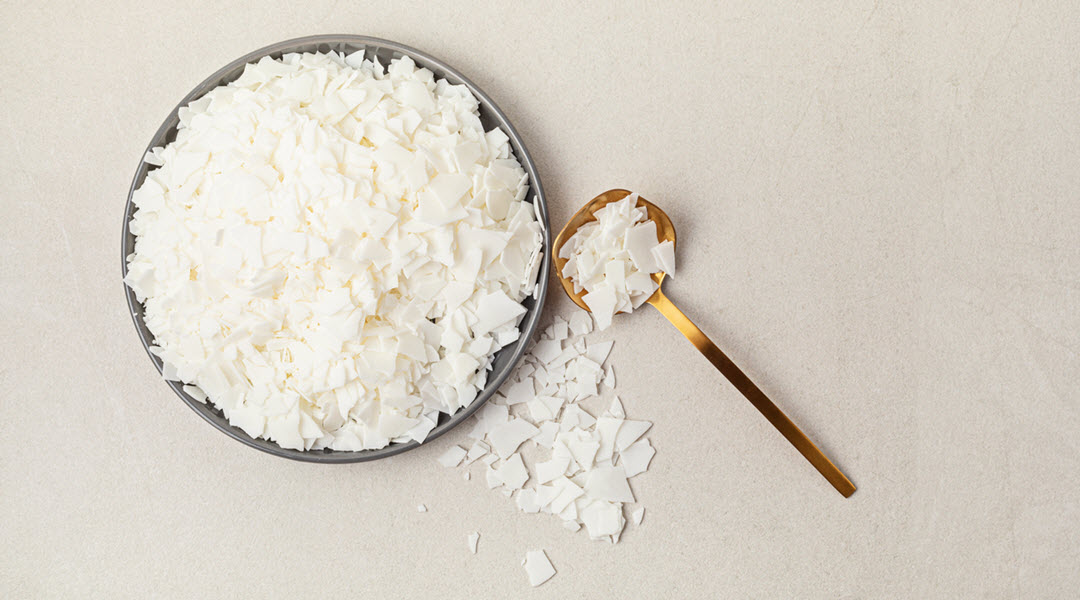Types of Candle Wax to Choose for Your Candle

When you step into the world of candle making or simply want to choose better candles for your home, the wax selection becomes your foundation. Each type of wax has distinct characteristics that directly impact how you experience your candle. We know the differences are more significant than most people realize.
Four Wax Types Define Your Candle
1. Soy Wax
Soy wax starts as a soybean but is transformed into a creamy, natural wax that has revolutionized container candles. A soy candle gives you a completely soot-free burn that won’t stain your walls or leave residue on your ceiling. This is a better candle experience in general, but especially if you burn candles in smaller spaces.
The environmental story means you’re supporting renewable agriculture while choosing a product that biodegrades naturally when you’re done with it. Unlike petroleum-based alternatives, soy wax comes from plants that farmers can grow year after year. The sustainability factor has made it a favorite among conscious consumers who want their purchases to align with their values.
The molecular structure allows scent oils to disperse evenly and consistently for better fragrance performance. The aromas generally fill your room with the intended fragrance rather than leaving you with a weak, disappointing scent. However, there’s a trade-off: soy wax struggles with color retention, typically producing softer, pastel rather than those vibrant, bold colors. The softness that makes it perfect for containers also means it’s not suitable for pillar candles, which need structural integrity.
2. Beeswax
Beeswax comes straight from honeybee hives, arriving in gorgeous shades from deep amber to creamy white depending on processing methods. Light one and you’ll instantly notice its gentle honey sweetness in the air. The air-purifying benefits are legitimate science. Burning beeswax releases negative ions that grab airborne pollutants, clean your space while providing light.
The significant difference also comes with a cost. Beeswax is significantly more than soy or paraffin alternatives, sometimes triple the price. And vegans can’t use it since it’s animal-derived.
Fragrance poses another challenge. Beeswax resists absorbing scent oils, requiring specialized techniques and extra fragrance to achieve noticeable results. Many professionals blend it with other waxes for scented versions. Despite these hurdles, devotees rarely switch back. That natural honey aroma, plus the cleanest burn available, makes the investment worthwhile to true candle aficionados.
3. Paraffin Wax
Paraffin wax dominates the global candle market. Derived from petroleum, coal, or shale oil, it’s the Swiss Army knife of candle waxes. You’ll find paraffin in everything from elegant tapered dinner candles to sturdy pillar candles because it offers various melting points that suit different candle types.
The consistency and reliability of paraffin make it a manufacturer’s preference. It burns predictably, holds colors well, and accepts fragrances easily. The affordability factor cannot be ignored. When you see inexpensive candles that still perform well, paraffin is likely the reason.
Environmental concerns shadow paraffin’s practical benefits. When burned, it can release compounds that some consider problematic for indoor air quality. The petroleum origin also raises sustainability questions for environmentally conscious consumers.
4. Rapeseed Wax
Rapeseed wax is the sustainability darling that’s popular in the candle making circles of Europe. The bright yellow plant produces wax that’s completely biodegradable and renewable, checking every environmental box.
The performance is also outstanding, with burn times stretching longer than most natural alternatives while fragrance retention stays consistently strong throughout the candle’s life. No soot, no smoke, just clean burning that delivers both eco-friendliness and the satisfying candle experience you hope for.
Availability outside Europe remains difficult since it’s still relatively new to the market. Prices reflect this scarcity too, running higher than established options like soy or paraffin. European candle makers have embraced rapeseed wax enthusiastically, and for good reason. It performs like a premium wax while maintaining impeccable environmental credentials.
Your Friends Are Making Candles in NYC
Candle making has become  a hit for social gatherings. Date nights, family weekends, friend hangouts, everyone’s discovering how satisfying it feels to create something beautiful together.
a hit for social gatherings. Date nights, family weekends, friend hangouts, everyone’s discovering how satisfying it feels to create something beautiful together.
Planning an intimate evening with your partner and candle making beats dinner and a movie. If you have restless kids on a rainy Saturday, candle making keeps them engaged while teaching everyone new skills. Suppose your friend group is looking for activities beyond the usual bar scene. Everyone leaves with custom scented masterpieces they actually want to display.
Wax selection matters more than most realize. The right choice ensures everyone walks away proud of their work, while poor quality wax leads to disappointing results that nobody wants to light again.
Create Your Perfect Candle Experience in NYC
Your newfound understanding of wax characteristics opens exciting possibilities. Soy wax. We’ve curated experiences that can match your preferences. Your personalized candle making experience starts with choosing the foundation that aligns with your vision, and we’re positioned to transform that choice into an unforgettable moment in New York City.
